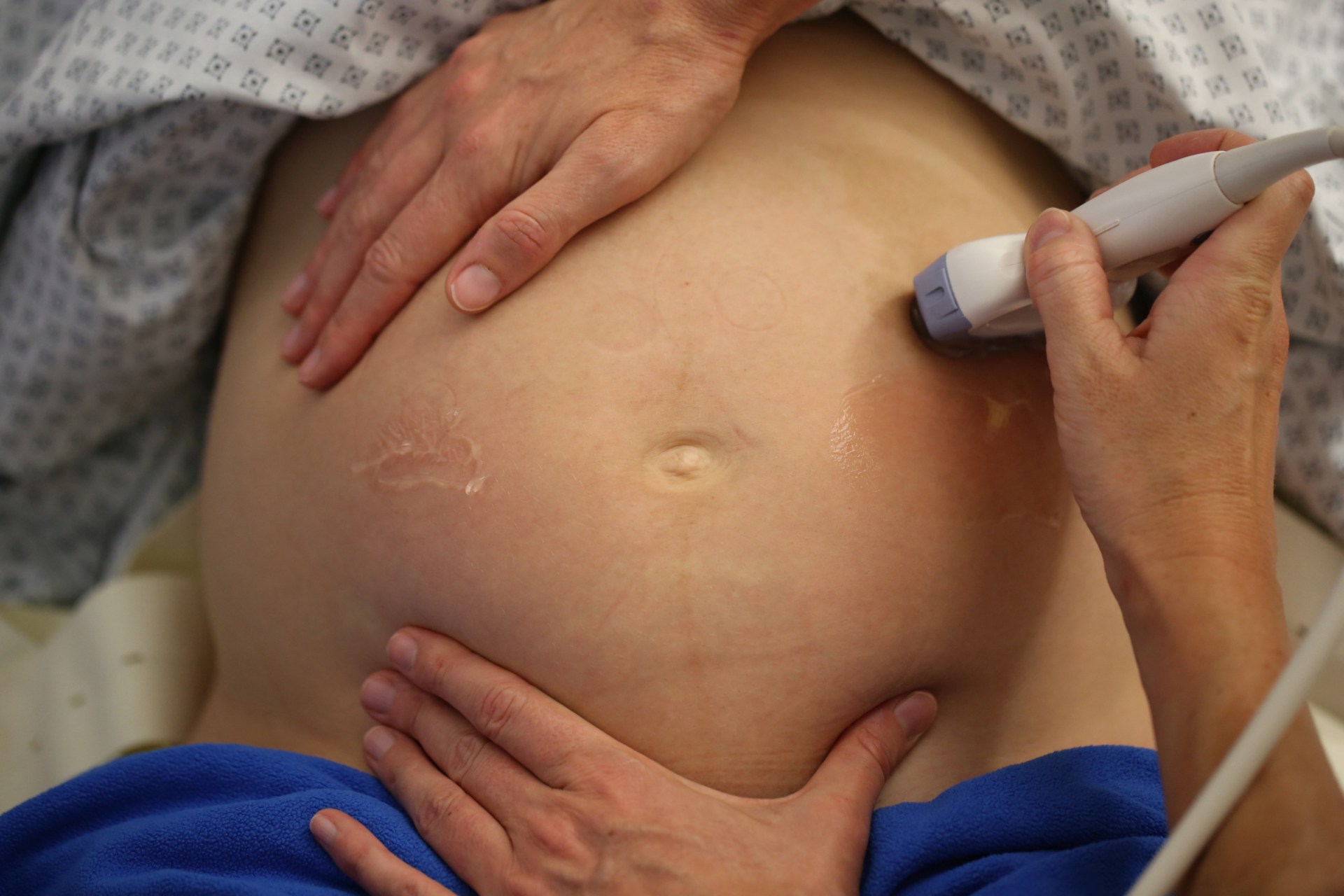In the case of pelvic end presentation or transverse presentation of the child, external turning is again being used more frequently as an alternative to cesarean section. The procedure has also been successfully established and standardized in the Department of Obstetrics at the University Hospital Zurich in recent years. In the meantime, the well-coordinated team of doctors performs an ECV every one to two weeks, and the number continues to increase. “At the USZ, we can draw on the many years of experience of several senior physicians who have previously been able to build up a great deal of expertise abroad,” says Nina Kimmich, Head Physician at the Department of Obstetrics.
Kimmich has herself performed numerous ECVs and welcomes the fact that the procedure is once again being used more frequently in practice: “On the one hand, a successful turn of the baby can avoid a cesarean section and its possible subsequent complications.” On the other hand, it is also the case that many women want a natural birth, says Kimmich. “With the ECV, we can avoid the risks that come with a breech birth.”
Clarification in the cadre doctor's office
In order to provide the best possible support for expectant mothers in the event of a pelvic end presentation or transverse presentation, the Department of Obstetrics offers preliminary discussions during cadre physician consultations. Ideally, the patient should be referred to the obstetric outpatient clinic around the 34th week of pregnancy. “All of our cadre physicians are very knowledgeable about this procedure and can give women comprehensive advice,” Kimmich says. The physician evaluates whether an external cephalic version is possible, or whether and which contraindications are given. “We discuss with the patient in great detail what the possible risks are and what the chances of success are for a natural birth with successful ECV – including whether it makes sense in her case to turn the baby or whether a C-section is more appropriate,” Kimmich explains. “It’s important to us to discuss the process of an external turn with expectant mothers in detail and to address their questions,” Kimmich added. Also discussed is the possibility of a vaginal breech delivery.
Realistic expectations are the key
The chances of successful ECV in a first pregnancy are about 50 percent, and in second or multiple pregnancies the success rate is 64-80 percent. “We also explain this to the patients in detail, because we want to avoid them being disappointed or even frustrated if it doesn’t work out,” Kimmich emphasizes. And of course there are also exclusion criteria: These include multiple pregnancies, umbilical cord wrapping around the child’s neck, recurrent bleeding, or if vaginal delivery is not possible or does not seem promising, for example, in cases of fetal macrosomia or macrocephaly, placenta or vasa praevia, severe preeclampsia or HELLP syndrome, or abnormal CTG. Relative contraindications include, for example, oligohydramnios, obese abdominal wall of the patient in whom the baby cannot be grasped, uterine malformations, uterus myomatosus, etc. Placental solution.
External turn from 36+0 weeks of pregnancy
If external cephalic version is possible and promising, it is performed from 36+0 weeks of gestation, as this is usually the optimal time. “That way, we don’t risk a problematic premature birth, and the baby is at a size where it can still be turned and, in most cases, won’t turn back,” Kimmich says.
Prepared for all risks
With an external turn, the risk of complications is very low. But nevertheless, in order to be optimally prepared for all potential complications, the ECV is performed under sonographic control of fetal heart tones in the delivery room and the patient is prepared in the same way as for a cesarean section. “This way, we can respond immediately if the need arises,” Kimmich says. Thanks to regular simulation training, they are prepared for such cases and the team is well attuned, she adds.
After the ECV, the patient remains in the hospital for one night for control and observation, including several CTG checks and sonographic control of the fetal position. If everything is normal, the patient can go home and come back for a check-up after one or two days. After that, regular pregnancy checks take place at the referring physician’s office or at the university hospital. “From the calculated date of delivery, we generously recommend induction,” adds Kimmich.
